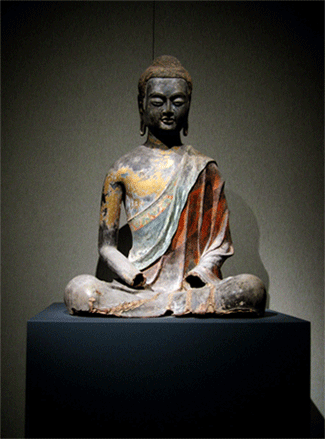Buddhism
Buddhism first originated around 2,500 years ago started by Siddhartha Gautama (or Gotama), or the Buddha. His awakening or enlightenment at the age of 35 started his spiritual way of life. Many people consider Buddhism to be a religion, but it is more of a philosophy, or way of life than a religion. The definition of philosophy is the pursuit of wisdom in an intellectual manner. This qualifies Buddhism to be categorized as a philosophy rather than a religion. The path of a Buddhist monk breaks down into three categories: 1) lead a moral; life; 2) to be mindful and aware of thoughts and actions; 3) develop wisdom and understanding.
Siddhartha Gotama, or Buddha, inherited the riches and luxury of his royal family in Lumbini, currently known as Nepal. He was born in 563 BC. At 29 years of age, he came to a realization that money and living lavishly did not result in total happiness. He then set out to discover the meaning of true happiness. After studying the present religions and philosophies for six years, he was enlightened and ultimately found 'the middle path'. Up to his death at 80 years of age, he taught the Dhamma, or Truth, meaning the principles of Buddhism.
Buddhism consists mainly of three paths of life.
- Low Path
- Middle Path
- High Path
The low path is for the man who lives his life in a struggle and works as a means to live. This person is a common man who hasn't developed or unconscious about a spiritual self. He does not see that working is a burden and he also does not seek beyond the materialistic needs.
The high path is a very religious path and it embodies divinity, gods, and goddesses as a way of life. Spirituality is manifested from within oneself by awakening it. This section is heavily influenced by Indian gods and goddesses.

Mahayana, or the middle path, is the belief that one should deal with the present and not the past or future. The first Buddha, Gautama, revealed how one that takes the middle path should live through the basic understandings of life. The basic understandings of life are shown by the Four Noble Truths and the Eight-Fold Path which are the following:
Four Noble Truths
- Pain, suffering, old age, and death are facts of life and one has to deal with it because these factors define what life is and make up our reality.
- Yearning for wealth, health, love, money, and life all cause suffering because we can not always supply our limitless wants.
- Removing desire from oneself ceases pain and suffering.
- By following the Eight-Fold Path, one is saved from the destruction of desire.
The Eight-Fold Path
- Right View - The way one should view life in the right way. One sees that an object is simply an object and nothing more.
- Right Intention - One should have pure intentions with actions. One no longer needs to be manipulative because of it.
- Right Speech - With pure intentions, one can speak without hesitance or trouble with speaking. It wouldn't be necessary to bluff or lie about something to manipulate others in order to get what you want.
- Right Discipline - Every aspect of one's life should continue with simplicity, whether it is at work, home, or dinner. Complications are cast away.
- Right Livelihood - Whatever job one has, one should enjoy it.
- Right Effort - This involves doing things without aggression and struggle.
- Right Mindfulness - Being aware of all aspects of one's life to the very little details.
- Right Concentration - One has to be in a state of knowing things as they are. This can be accomplished by discipline such as sitting meditation.
White, Brian. "A Basic Buddhism Guide: 5 Minute Introduction." BuddhaNet. 1993. Buddha Dharma Education Association Inc. 18 Jul 2007 <http://buddhanet.net/e-learning/5minbud.htm>.
shaolin overview @ shaolin.com." Shaolin Gung Fu (kung fu) Institute @ shaolin.com. 1997-2007. 24 Jul 2007 <http://shaolin.com/shaolin_philosophy.aspx>.
"Tang dynasty Buddha" - http://flickr.com/photos/69275268@N00/86745965

